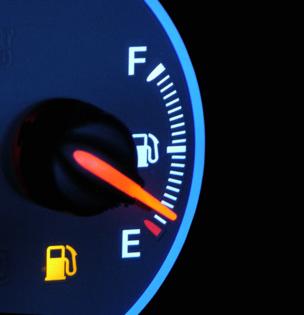Motormouth: Can I use flex fuel?
Published in Automotive News
Q: What's with this new eco-friendly gas blend with the yellow handle? Will it harm a non-flex fuel engine? It's 50 cents cheaper.
R.M., Elbert, Colorado
A: According to the U.S. Department of Energy, Energy Efficiency and Renewable Energy division, E85 (or flex fuel) is a term that refers to high-level ethanol-gasoline blends containing 51% to 83% ethanol, depending on geography and season. Other than lower miles per gallon, motorists driving FFVs will see little difference when using E85 versus gasoline. Depending on the actual ethanol content, E85 has less energy per gallon than gasoline to varying degrees (fuel economy decreases as the ethanol content increases).
Don’t put it in cars that are not designed to run on flex fuel. Damage is quite likely.
Q: I recently had an oil change on my 2007 Altima. Joe, my longtime mechanic, says you should do both front and rear brakes. When I drive the car, it stops fine with no squeaking or grinding noise. Is there any way to tell if I need new brakes without getting a second opinion? If he shows me the pads on the upcoming oil change, what am I checking for?
A.F., Chicago
A: Check for the thickness of the friction material — the stuff that contacts the brake rotors. I would say that about 1/8 inch of friction material is about the limit. Your mechanic can probably eyeball them, but measuring with a caliper is the professional approach. If your pads are approaching that, I would replace them.
Once you hear noise, you’ve waited too long. The pads’ backing plates are gouging the rotors. If the brakes on either the front or rear are OK, you needn’t replace them.
Q: Two years ago, I had to get an emissions test on my 2014 Honda Civic to renew my registration. When I took it in to be checked, I was told that a monitor was not ready (the catalyst monitor was the culprit) and to drive it a lot more. I did, to no effect. I eventually discovered that in my Civic manual are the instructions for a “drive cycle” that must be completed to get the monitors ready. I did this and passed the test. Well, it is that time again and because the battery has been replaced since the last check, the monitors reset, and I am once again back where I was. I did the magical drive cycle again, but this time it did not work. I think it might be because I was driving at highway speeds and not the “50 to 60 mph” specified. Why is the drive cycle to get the monitors ready so different from typical driving? I mean, who normally lets their car idle for 20 seconds, then revs up the engine to 2,000 rpms for three minutes, then idles for 20 seconds then gets on the highway and maintains a speed that will anger other drivers for 20 minutes? An EV seems quite appealing right now.
R.L., Chicago
A: The drive cycle specification data is embedded in the car’s computer memory. To reset the readiness monitor, the drive cycle must be completed to the specs. The drive cycle was created in a laboratory established by the EPA long ago. To make things equal, all cars had to pass the drive cycle before they may be sold. Carmakers may self-certify now. You really need to follow the drive cycle properly and high speed is not one of the criteria.
©2024 Tribune Content Agency, LLC.







Comments